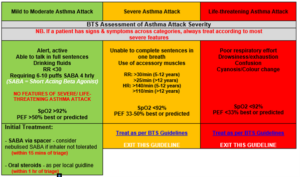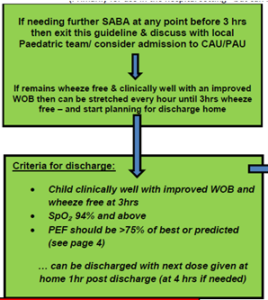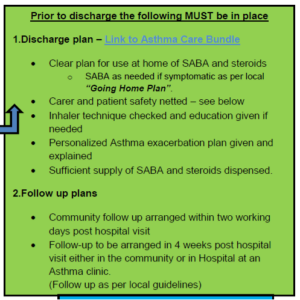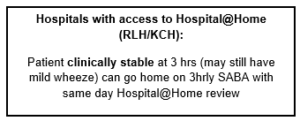Giles Armstrong, Consultant in Paediatrics Emergency Medicine,Clinical Director for Integrated Paediatrics (RLH site) and North Thames Paediatric Network (NTPN) Paediatric Emergency Medicine (PEM) Lead
National asthma secondary care guidance has focused on the immediate treatment and stabilisation of children and young people (CYP) with asthma exacerbations. It does not cover how to discharge patients safely from an ED attendance in a timely fashion.
An audit of London paediatric EDs showed 30% of departments had no access to any decision to discharge guidance for these patients and that, in departments where guidance did exist, there was significant variation.
A working group, comprising paediatric respiratory, general paediatric and paediatric emergency medicine consultants devised a new moderate asthma guideline with input from London Emergency Medicine for Children and Young People (LEMCYP), the London Asthma Leadership and Innovation Group (LALIG) and Healthy London Partnership CYP asthma team (now part of the NHS England – London Babies Children and Young People team) and after consultation with all ICSs.
The group used a working definition of moderate asthma exacerbation as:
Needing treatment with inhaled/nebulised bronchodilator (i.e. needed burst therapy) but not requiring escalation to intravenous bronchodilators.
The guideline is designed for children over 5 years of age and support staff in the assessment management and discharge of this group. While the guideline is predicated on a confirmed diagnosis of asthma, it includes guides on how to take a full asthma history in cases where the diagnosis is unclear.
The guideline includes reminders on what constitutes a severe or life-threatening exacerbation and advice that this guideline does not cover those exacerbations.


The main focus of the guideline is the safe discharge of patients in the mild/moderate group.
The expert advice from the groups involved in the guideline development, was that patients were safe for discharge when they could remain wheeze free 3 hours post treatment.
Additional advice was included around the expected peak expiratory flow and oxygen saturation (SpO2) readings to support safe discharge, alongside clinical assessment.
There is also guidance on when to exit the guideline if the patient fails to meet these safe discharge criteria. In addition, some information was included about advice to give families at the time they are ready for discharge.

The discharge advice does not mandate a specific weaning plan. Pan-London work led by LALIG issued new guidance on post-discharge weaning plans. This is available separately to this guidance.
Finally, the guideline also supports units who have access to a ‘Hospital at Home’ model.

This allows for earlier discharge in places where there is the facility to review these children in the community at three hours post bronchodilators.
The final version of the guideline was signed off at the London Clinical Executive Group and has already been shared with LEMCYP for distribution.
The full guidance can be found here: Moderate Asthma Pathway – London region Children and Young People’s Asthma – FutureNHS Collaboration Platform (key documents and guidance section).
Visit the 2023 #AskAboutAsthma webpage for more blogs, videos and podcasts about asthma care for children and young people.
